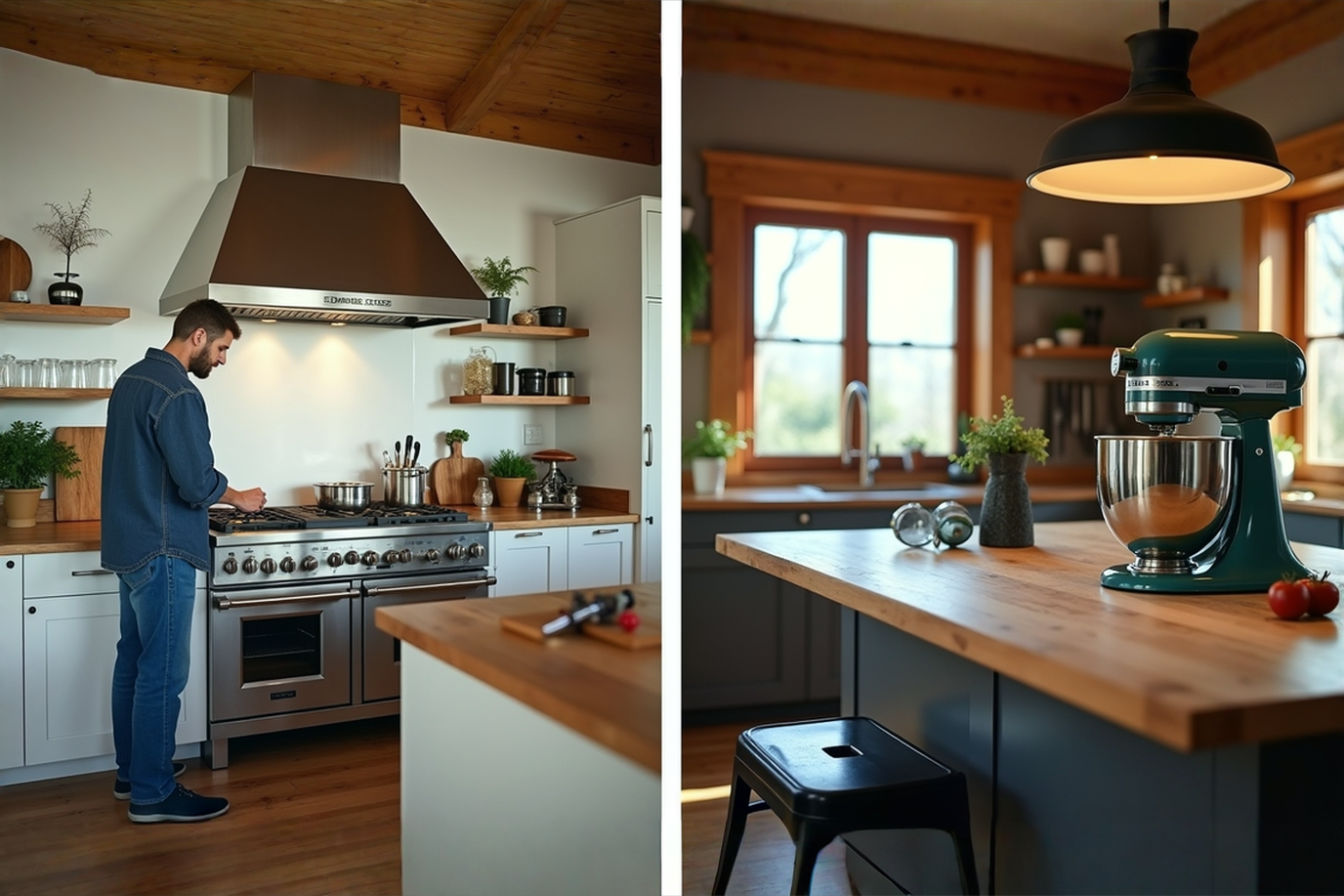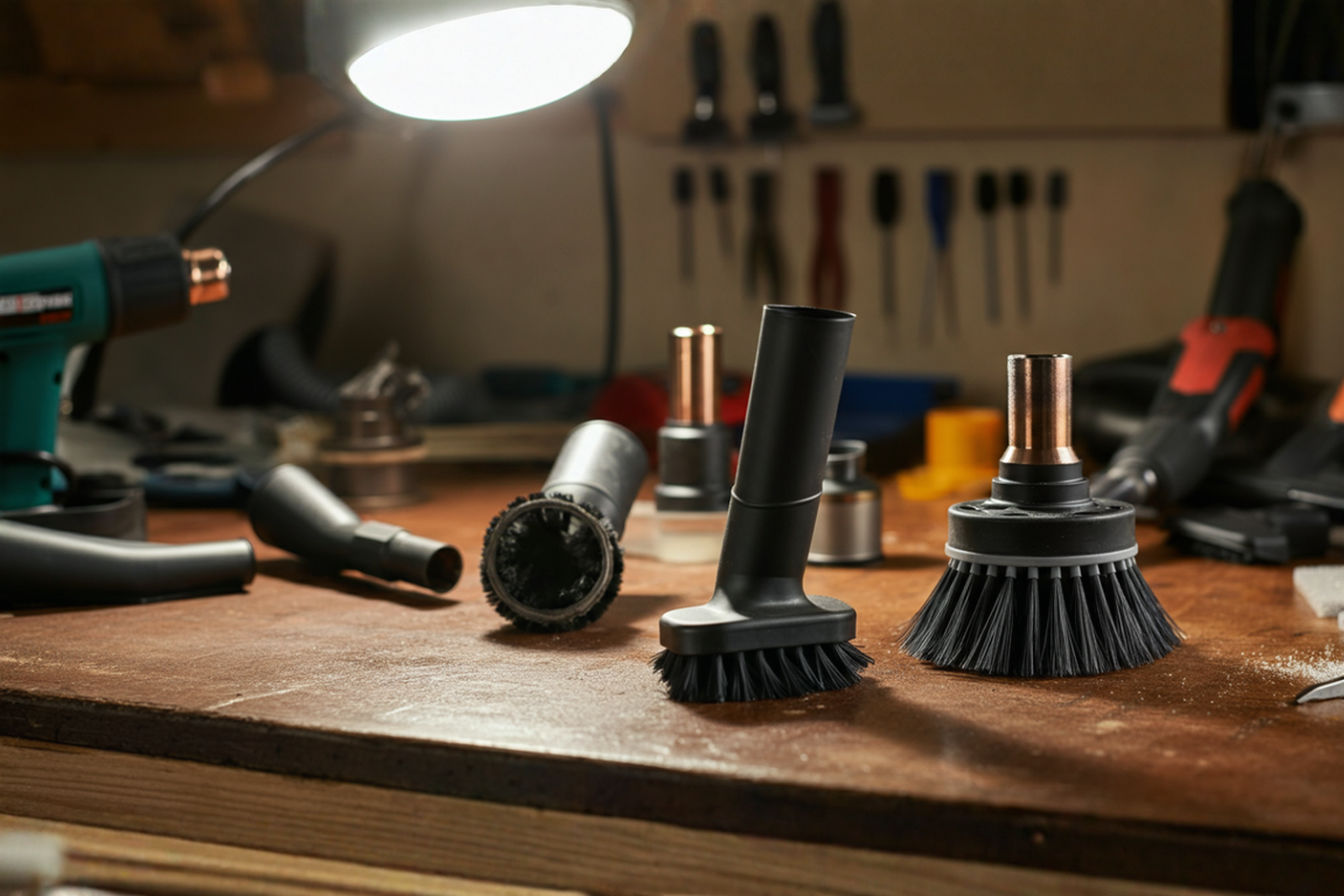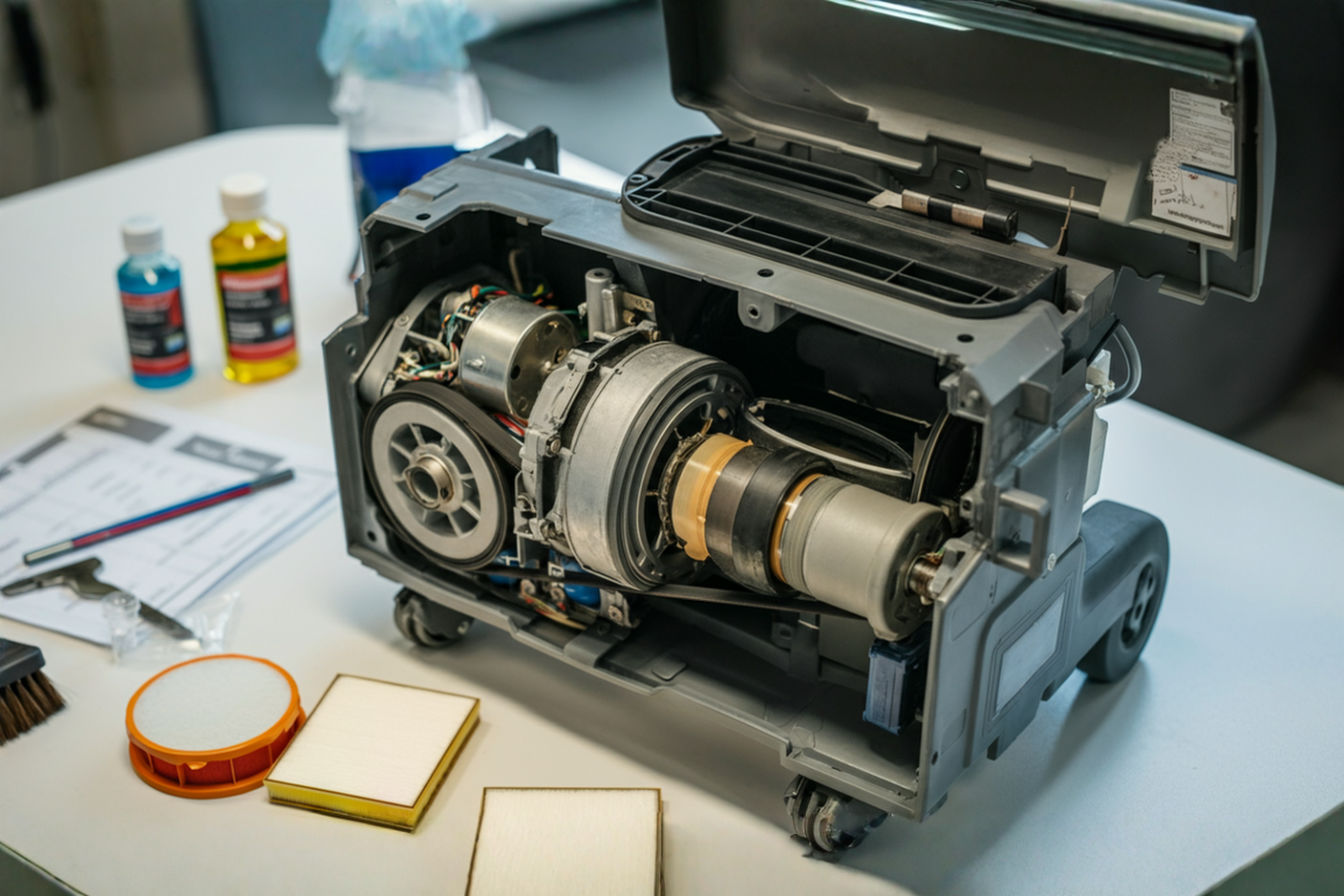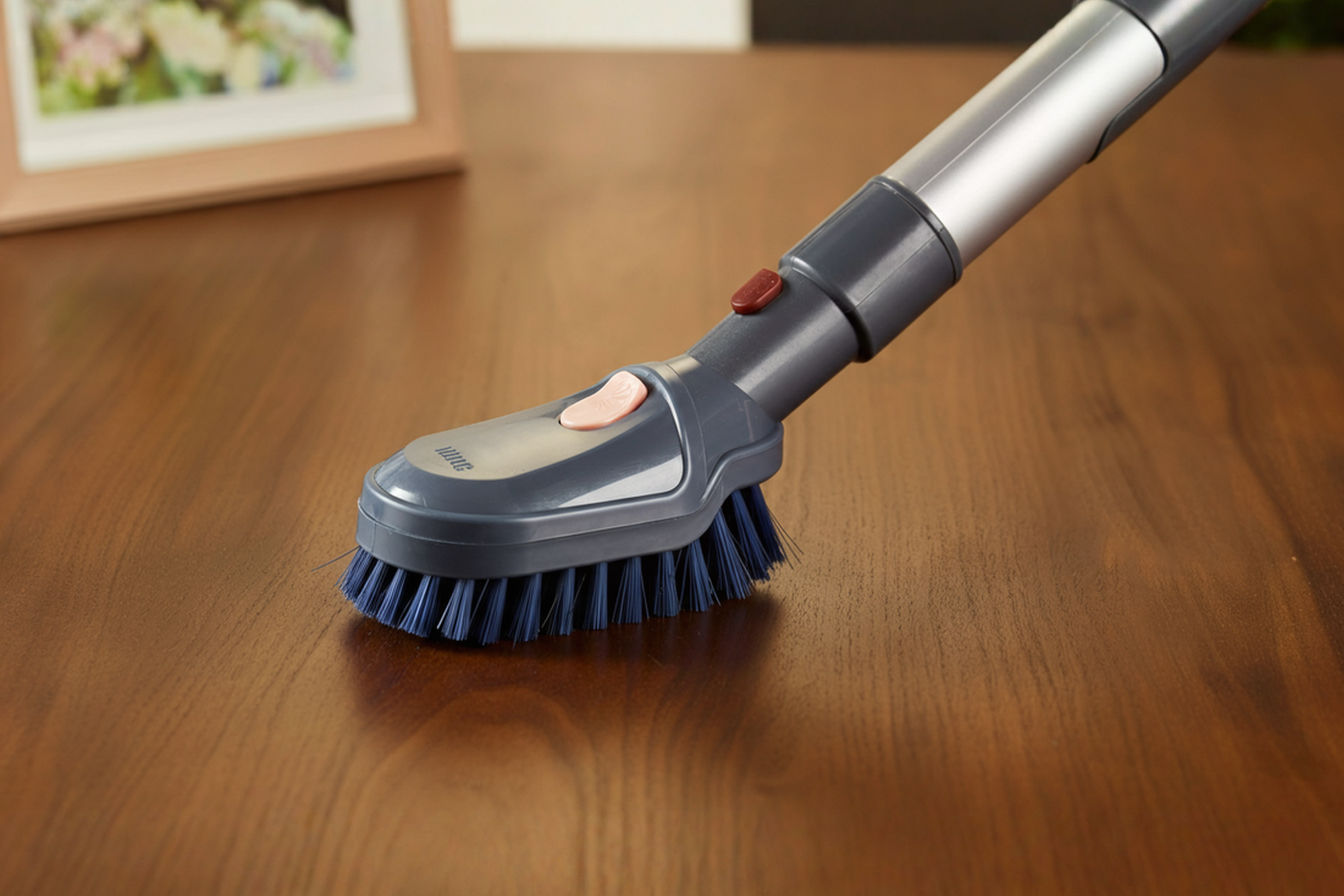Vacuum Data in Smart Home Dashboards: The Ultimate Guide to Tracking Cleaning in Your Home System
Learn how modern smart vacuums collect valuable cleaning data that can transform your home maintenance routine. What insights are hiding in your vacuum’s dashboard?
This post may contain affiliate links. If you make a purchase through these links, we may earn a commission at no additional cost to you.
In today’s connected homes, robot vacuums have evolved from simple automated cleaners into sophisticated data-gathering devices that can transform how we maintain our living spaces. The integration of vacuum cleaning data into smart home dashboards represents a significant leap forward in home management, allowing homeowners to track, analyze, and optimize cleaning performance with unprecedented precision.
This comprehensive guide explores how vacuum data collection and visualization in smart home systems can revolutionize your cleaning routines, save time, and ensure your home remains consistently clean with minimal effort. By understanding the wealth of information your smart vacuum collects and how to leverage it effectively, you’ll gain valuable insights into your home’s cleanliness patterns and unlock new possibilities for automation and efficiency.
Understanding Smart Vacuum Data Collection
Modern robot vacuums function as mobile sensing platforms that continuously gather information about your home environment as they clean. These intelligent devices collect far more than just dust and debris; they accumulate valuable data that can provide insights into your home’s layout, usage patterns, and cleaning needs.
Types of Data Collected by Modern Robot Vacuums
Smart vacuum cleaners typically collect several categories of data during operation:
Spatial mapping data forms the foundation of intelligent cleaning. Using a combination of sensors—including LiDAR, cameras, infrared, or ultrasonic technology—your vacuum creates detailed floor plans of your home. This spatial awareness allows the device to navigate efficiently and avoid obstacles while cleaning.
Cleaning performance metrics track how effectively the vacuum cleans different areas. These include suction power utilization, brush rotation speed, and cleaning coverage completeness. The system monitors areas that required multiple passes or where debris concentration was particularly high.
Operational statistics encompass data about how the vacuum functions over time. Battery usage patterns, charging frequency, cleaning duration, and distance traveled all contribute to understanding the device’s efficiency and performance trends.
Maintenance indicators monitor the condition of critical components. Filter saturation levels, brush wear status, and dust bin fullness are tracked to ensure optimal performance and prompt necessary maintenance actions before problems arise.
How Smart Vacuums Process Information
The data collection process begins the moment your vacuum starts cleaning. Onboard processors interpret sensor inputs in real-time, making hundreds of decisions per second about navigation, cleaning intensity, and obstacle avoidance. This information is typically stored locally on the device before being transmitted to cloud servers through your home Wi-Fi network.
Once processed, this data transforms into actionable insights that appear on your smart home dashboard. The vacuum’s companion app serves as the primary interface, though many models now integrate with broader smart home platforms like Google Home, Amazon Alexa, or Apple HomeKit to provide a unified control experience.
The Technology Behind Vacuum Mapping
The mapping capabilities of modern robot vacuums represent some of the most impressive technological advancements in home automation. High-end models employ simultaneous localization and mapping (SLAM) algorithms—the same technology used in autonomous vehicles—to create accurate representations of your home.
As the vacuum moves throughout your space, it continuously updates its internal map, noting the location of furniture, walls, stairs, and other features. More advanced models can even differentiate between room types based on layout and furnishings, allowing for room-specific cleaning protocols and reporting.
This spatial intelligence enables the creation of detailed cleaning maps that show exactly where the vacuum has cleaned, how thoroughly, and where potential problem areas exist. These visualizations form the cornerstone of your vacuum data dashboard experience.
Essential Vacuum Metrics to Track in Your Dashboard
A well-designed smart vacuum dashboard provides access to key performance indicators that help you understand and optimize your home cleaning system. Knowing which metrics matter will help you make the most of this information.
Cleaning Coverage and Mapping Visualization
The most immediately useful data visualization is the cleaning coverage map. This color-coded floor plan shows exactly where your vacuum has cleaned, typically using different colors to indicate:
- Areas that have been thoroughly cleaned
- Zones that received multiple passes due to detected dirt
- Regions the vacuum couldn’t reach
- Spots that were skipped due to obstacles or access issues
These visual representations allow you to quickly identify problem areas where the vacuum consistently struggles to clean effectively. Many systems also track coverage percentages, giving you a quantitative measure of how completely your home was cleaned during each session.
Cleaning Duration and Efficiency Metrics
Time-based metrics provide insights into your vacuum’s operational efficiency. Your dashboard should display:
Total cleaning time shows how long each cleaning session takes, which helps in scheduling and planning. Unexpected increases in cleaning duration can indicate obstacles or difficulties the vacuum is encountering.
Area-specific cleaning times break down how long the device spends in different rooms or zones. This information can reveal which areas of your home require the most cleaning attention.
Cleaning efficiency scores combine multiple factors—including coverage, time, and detected dirt—to generate an overall performance rating. These proprietary scores vary by manufacturer but generally provide a quick assessment of cleaning effectiveness.
Battery Performance and Charging Cycles
Battery metrics are critical for understanding your vacuum’s operational capacity and longevity:
Battery consumption rates show how quickly power depletes during cleaning, which can vary based on floor type, cleaning mode, and obstacle density. Sudden changes may indicate battery health issues.
Charging cycle counts track how many times the battery has been recharged, helping predict when replacement might be necessary.
Runtime estimates predict how long the vacuum can clean before needing to recharge, which is particularly useful for planning cleaning sessions in larger homes.
Maintenance Indicators
Proactive maintenance alerts help preserve your vacuum’s performance and extend its lifespan:
Filter status indicators track the accumulation of fine particles that can reduce suction power and air quality if not addressed.
Brush wear monitoring detects when rotating brushes have accumulated hair or debris or have worn down and need replacement.
Dust bin capacity alerts notify you when the collection bin needs emptying, preventing overflow issues that could spread debris rather than collect it.
These indicators typically include countdown timers or percentage values showing remaining capacity or time until maintenance is needed.
Integrating Vacuum Data into Smart Home Dashboards
The true power of vacuum data emerges when it’s incorporated into your broader smart home ecosystem, allowing for cross-device automation and centralized monitoring.
Popular Smart Home Platforms Supporting Vacuum Integration
Several major smart home platforms offer robust support for vacuum data integration:
Google Home provides basic vacuum control and status monitoring, with cleaning history and some mapping visualization available through compatible vacuum brands.
Amazon Alexa offers voice control integration and status reporting, though detailed cleaning data typically remains in the manufacturer’s app.
Apple HomeKit compatibility is growing among vacuum manufacturers, allowing for inclusion in scenes and automations within the Apple ecosystem.
Home Assistant stands out for hobbyists and power users, offering highly customizable dashboard options and the ability to integrate data from virtually any connected vacuum.
Samsung SmartThings provides moderate vacuum integration capabilities with compatible models, focusing on scheduling and basic status information.
Setting Up Vacuum Data Feeds in Your Dashboard
Connecting your vacuum to your smart home dashboard typically involves these steps:
- Ensure your vacuum is connected to your home Wi-Fi network through its companion app
- Within your chosen smart home platform, add the vacuum as a new device
- Authorize the connection between the vacuum manufacturer’s cloud service and your smart home platform
- Select which data points and controls to display on your dashboard
- Configure any desired automations or scenes involving the vacuum data
Most manufacturers provide step-by-step instructions for their specific models, though the general approach remains consistent across brands.
Cross-Device Compatibility Considerations
When integrating vacuum data, be mindful of these compatibility factors:
API limitations may restrict which data points are accessible outside the manufacturer’s own app. Some brands are more open than others with their data sharing.
Update frequency varies between systems—some provide real-time data streaming while others may update only at the end of cleaning cycles.
Historical data retention policies differ among platforms. Some may store months of detailed cleaning history, while others only keep recent sessions.
For the most complete data access, you may need to use a combination of the manufacturer’s native app and your preferred smart home dashboard.
Analyzing Vacuum Cleaning Patterns and Trends
The accumulated data from multiple cleaning sessions reveals valuable patterns that can help you understand your home’s unique cleaning needs.
Interpreting Cleaning Maps and Coverage Data
Cleaning maps become more valuable over time as they reveal consistent patterns:
High-coverage areas indicate zones where your vacuum consistently achieves thorough cleaning, suggesting optimal furniture arrangement and few obstacles.
Frequent skip zones reveal areas regularly missed due to obstacles, tight spaces, or navigation challenges. These spots may require occasional manual cleaning or furniture rearrangement.
Edge cleaning effectiveness can be assessed by examining how consistently the vacuum covers the perimeters of rooms, where dust often accumulates.
Many systems allow you to overlay multiple cleaning sessions, creating a heat map that highlights your home’s most frequently cleaned—or most consistently missed—areas.
Identifying High-Traffic Areas in Your Home
Cleaning frequency data highlights which parts of your home experience the most activity:
Dirt detection patterns show where your vacuum consistently finds the most debris, indicating high-traffic pathways or areas with greater contamination sources.
Suction power adjustments recorded by adaptive vacuums reveal where floor conditions required more intensive cleaning, often corresponding to entryways, kitchen areas, and main household thoroughfares.
This information helps you prioritize which areas might benefit from more frequent cleaning schedules or different flooring choices in future renovations.
Spotting Cleaning Inefficiencies and Obstacles
Data analysis often reveals opportunities for improvement:
Time-consuming zones where the vacuum spends disproportionate amounts of time may indicate problematic floor surfaces or excessive obstacles.
Battery depletion patterns show where cleaning requires the most energy, potentially highlighting inefficient travel paths or problematic floor transitions.
Navigation challenges appear as consistent areas where the vacuum slows down, makes multiple attempts to pass, or generates error notifications.
Addressing these inefficiencies—perhaps by relocating furniture or adding navigation markers—can significantly improve overall cleaning performance.
Optimizing Home Cleaning Using Vacuum Data
With insights gained from your vacuum’s data, you can implement strategies to enhance cleaning effectiveness and efficiency.
Creating Zone-Based Cleaning Strategies
Most advanced robot vacuums support zone-based cleaning, which allows for targeted attention to specific areas:
Custom zone definitions let you create named areas on your floor plan that correspond to different rooms or areas with unique cleaning needs.
Zone-specific cleaning intensities can be assigned based on floor type and typical dirt levels. For example, entryways might receive more powerful suction than bedrooms.
Exclusion zones prevent the vacuum from entering areas with delicate items or potential hazards, saving time and preventing disruptions.
By analyzing which zones consistently collect more debris, you can prioritize these areas for more frequent cleaning while reducing unnecessary cleaning in rarely-soiled spaces.
Scheduling Based on Usage Patterns
Smart scheduling leverages data to clean at optimal times:
Peak activity analysis reveals when different areas of your home experience the most use, allowing you to schedule cleaning during periods of inactivity.
Contamination trend analysis might show that certain rooms benefit from morning cleaning while others are better addressed in the evening based on when they typically become soiled.
Seasonal adjustment recommendations can be derived from long-term data showing how cleaning needs change throughout the year, perhaps due to open windows in summer or heating system operation in winter.
Some advanced systems can even recommend schedule adjustments based on detected patterns, helping you continuously optimize your cleaning routine.
Setting Up Automated Cleaning Rules
Automation rules elevate your vacuum from a scheduled cleaner to a responsive home maintenance system:
Trigger-based cleaning can initiate vacuum sessions based on inputs from other smart home devices—perhaps starting a quick kitchen cleaning after your smart cooking appliances indicate meal preparation has finished.
Occupancy-responsive cleaning uses data from motion sensors or smartphone location tracking to clean when occupants are away, minimizing disruptions.
Weather-adaptive routines might increase cleaning frequency during high pollen seasons or after detecting that weather conditions have led to more outdoor debris being tracked inside.
These automations transform vacuum operation from a rigid schedule to a responsive system that addresses cleaning needs as they arise.
Privacy and Security Considerations
As with any connected device that maps and monitors your home, smart vacuums raise important privacy and security considerations that should not be overlooked.
Understanding What Data Leaves Your Home
Robot vacuums collect detailed information about your living space that may be transmitted beyond your local network:
Floor plan data includes precise measurements of your home layout, room dimensions, and furniture placement—potentially sensitive information that exists on manufacturer servers.
Usage patterns can reveal when you’re typically home or away, as well as how you use different spaces within your house.
Image data may be captured by camera-equipped models for navigation purposes, though most manufacturers implement safeguards to prevent these images from being accessible.
Reputable manufacturers typically anonymize and encrypt this data, but it’s important to understand their specific policies regarding data storage, use, and sharing.
Securing Your Vacuum’s Connection
Protecting your vacuum’s connection to your network should be a priority:
Firmware updates should be applied promptly, as they often contain security patches addressing newly discovered vulnerabilities.
Strong, unique passwords for both your Wi-Fi network and vacuum account provide foundational protection against unauthorized access.
Network segmentation using guest networks or IoT-specific VLANs can isolate your vacuum from more sensitive devices on your home network.
Two-factor authentication, when available, adds an important layer of protection to prevent account compromises that could expose your home data.
Managing Permissions and Access Controls
Control who can access and operate your vacuum system:
User account limitations should be configured to restrict who can view mapping data or control the vacuum remotely.
Third-party integration permissions should be reviewed carefully, as connecting your vacuum to additional services may grant them access to your home layout and usage data.
Location tracking features that enable geofencing capabilities should be evaluated for their privacy implications and disabled if the benefits don’t outweigh your privacy concerns.
Remember that convenience features often come with privacy trade-offs that should be consciously evaluated rather than blindly accepted.
Troubleshooting Through Dashboard Data
Your vacuum’s collected data serves as a powerful diagnostic tool when performance issues arise.
Identifying Common Issues Through Data Patterns
Dashboard data often reveals problems before they become obvious:
Declining coverage percentages may indicate sensor issues or navigation problems developing over time.
Increasing cleaning durations without corresponding increases in cleaning area suggest reduced efficiency, perhaps due to weakening suction or brush performance.
Frequent error codes in specific locations highlight problematic areas that may require physical modification or exclusion from cleaning routes.
Battery discharge rates that accelerate over time indicate battery degradation that will eventually require replacement.
Regular review of these trend data can help you address developing issues before they lead to complete failure.
Interpreting Error Codes and Notifications
Most vacuum dashboards include detailed error reporting:
Location-specific errors show exactly where problems occurred, often with accompanying photographs in advanced models.
Error frequency analysis reveals whether issues are isolated incidents or recurring problems requiring intervention.
Contextual error information may include details about environmental conditions, such as lighting levels or floor surface changes, that contributed to the error.
Manufacturers typically provide detailed explanations of error codes in their support documentation, though your dashboard may include integrated troubleshooting guidance.
Preventative Maintenance Scheduling
Data-driven maintenance reminders help preserve optimal performance:
Component lifespan tracking monitors the age and usage of replaceable parts like filters, brushes, and wheels.
Performance trend analysis may suggest maintenance before scheduled intervals if performance metrics show premature degradation.
Cleaning effectiveness comparisons between sessions can highlight when maintenance has become necessary due to gradually declining results.
Following these data-informed maintenance recommendations keeps your vacuum operating at peak efficiency and extends its useful life.
Future Trends in Smart Vacuum Data Integration
The evolution of vacuum data systems continues at a rapid pace, with several emerging technologies poised to transform home cleaning.
AI-Powered Cleaning Optimization
Artificial intelligence is increasingly applied to vacuum data analysis:
Learning algorithms that study your home’s dirt patterns over time can predict cleaning needs and optimize schedules autonomously.
Adaptive cleaning intensity systems adjust suction power, brush speed, and movement patterns based on historical effectiveness data for different areas.
Behavioral learning capabilities enable vacuums to understand household routines and preferences, automatically adapting to complement rather than disrupt daily activities.
These AI applications transform data collection from a monitoring tool to an active participant in cleaning management.
Cross-Appliance Cleaning Coordination
The integration of vacuum data with other smart appliances creates new possibilities:
Coordinated cleaning systems might involve air purifiers increasing filtration after vacuum sessions stir up dust, or smart blinds closing to reduce dust accumulation before vacuuming begins.
Multi-device cleaning orchestration could enable specialized cleaning robots—perhaps floor moppers or dedicated edge-cleaning devices—to work in sequence with vacuum cleaners based on detected needs.
Environmental sensor integration from air quality monitors or humidity sensors might trigger specialized cleaning protocols when conditions indicate increased dust or allergen presence.
This ecosystem approach transforms individual smart devices into a coordinated home maintenance system.
Enhanced Spatial Awareness and Object Recognition
Next-generation mapping capabilities will provide unprecedented detail:
Permanent vs. temporary obstacle differentiation will allow vacuums to distinguish between furniture and temporarily placed items, adapting cleaning strategies accordingly.
Surface type recognition enables automatic adjustment to different flooring materials without manual programming.
3D mapping capabilities extend beyond floor plans to include furniture heights, under-couch spaces, and multilevel integration for homes with stairs.
Specific object recognition helps identify common household items like socks, charging cables, or pet toys that should be avoided during cleaning.
These advanced spatial awareness capabilities will significantly reduce the need for pre-cleaning preparation and improve overall effectiveness.
Conclusion
The integration of vacuum data into smart home dashboards represents far more than a technological novelty—it fundamentally transforms how we approach home cleaning. By converting the mundane task of vacuuming into a data-driven process, these systems enable unprecedented insights into our living spaces and cleaning needs.
The ability to visualize cleaning coverage, analyze performance trends, and optimize scheduling based on actual usage patterns elevates robot vacuums from simple automated tools to intelligent home management systems. As these technologies continue to evolve, we can expect even more sophisticated integration between vacuum data and broader smart home ecosystems.
For homeowners looking to maximize cleanliness while minimizing effort, embracing these data capabilities represents the logical next step in smart home adoption. By understanding what your vacuum knows about your home and leveraging that information effectively, you can achieve a consistently cleaner living environment with less personal intervention than ever before.
The future of home cleaning is not just about better vacuum technology—it’s about smarter utilization of the wealth of data these devices collect as they move throughout our homes. By mastering your vacuum data dashboard today, you position yourself at the forefront of this cleaning revolution, ready to incorporate new capabilities as they emerge in this rapidly evolving field.






